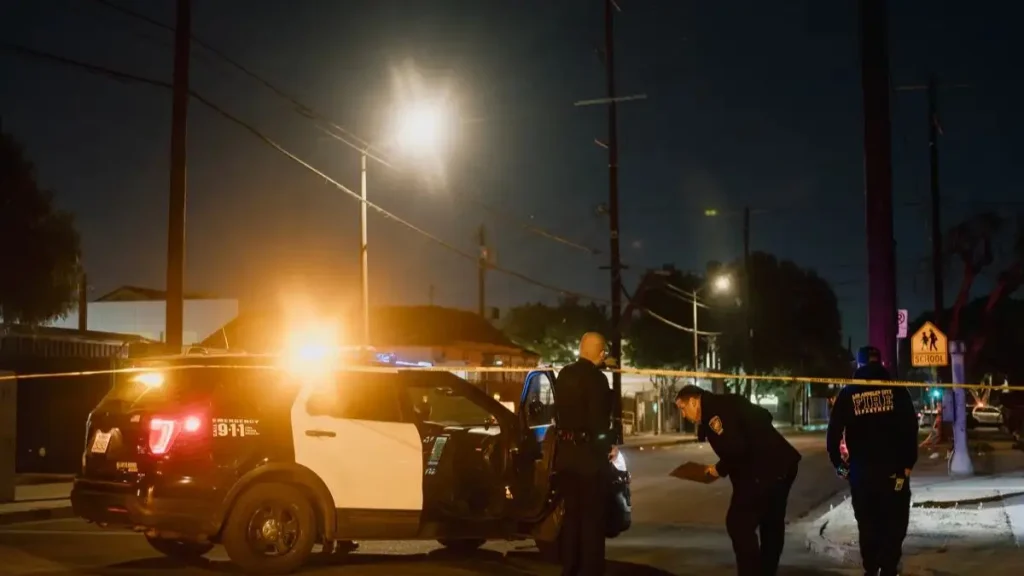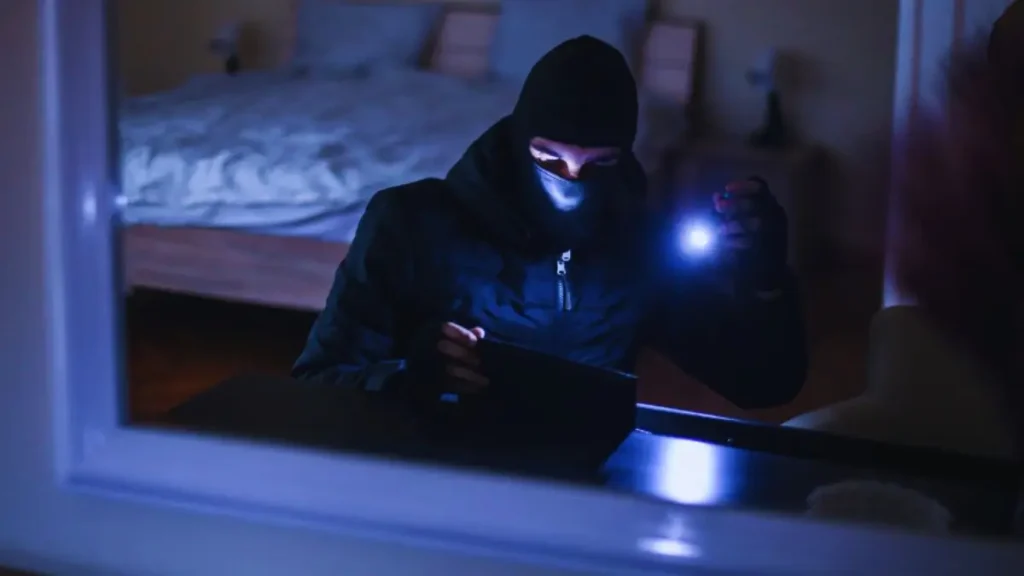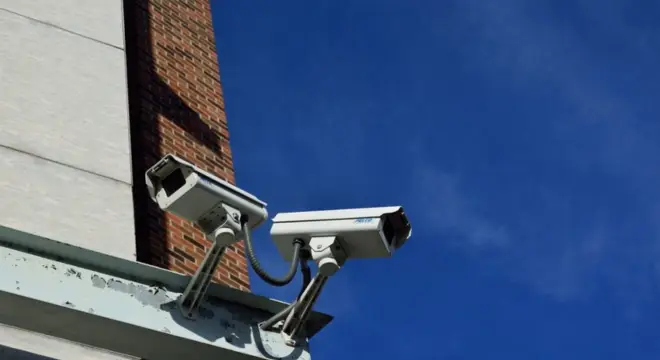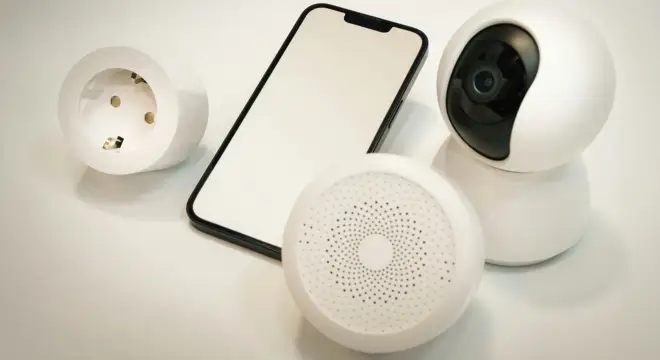Burglary Reported at Beverly Crest Home Police Investigating
I’ve covered enough home invasions to tell you—most of them follow a pattern. But what happened early morning in Beverly Crest? That’s different. It wasn’t just another luxury break-in. Someone climbed through a second-floor window while a housekeeper was working alone inside the home. That’s a violation that cuts deeper.
It happened around 1:20 a.m. on Hutton Drive—quiet street, high-value property, just like you’d expect in Beverly Crest. According to LAPD, the intruder got in, took whatever they came for, and left. But the bigger story isn’t what was stolen—it’s what could’ve happened.
The housekeeper, completely alone and vulnerable, noticed the home’s cameras had been disabled. She had the presence of mind to call the police immediately. Thankfully, she wasn’t hurt.
This isn’t just another headline. It’s a wake-up call for anyone who employs staff, lives in a gated community, or believes cameras are enough. If someone can disable your system before you even know they’re there, what’s really protecting you?
Have you ever thought about how secure your second floor really is? Let’s dig deeper.
What Happened on Hutton Drive at 1:20 AM?
Here’s what we know. Around 1:20 a.m., someone broke into a house in the 2500 block of Hutton Drive—right in the heart of Beverly Crest. According to the Los Angeles Police Department, the intruder climbed through a second-floor window and made off with an unknown amount of property.
KTLA reported the details first, confirming that police believe only one suspect was involved. What stands out isn’t just the time of the break-in—but the method. No smashed doors. No alarms going off. Just a quiet entry through a spot most of us rarely think about securing.
If you’re like most homeowners, you probably focus all your attention on front entries and ground-floor windows. But it’s these upper-level blind spots that experienced intruders often target. Especially in high-value neighborhoods like this, where people assume their surroundings will protect them.
And here’s the part that’s most unsettling—you wouldn’t have known anything had happened unless someone inside noticed. Which brings us to the real turning point in this story.
The Silent Witness: Housekeeper’s Account
Imagine this: you’re at work inside someone else’s home, going about your normal tasks, when you realize something feels off. That’s exactly what the housekeeper experienced. She was inside when the break-in happened—and didn’t even know someone had entered until after the fact.
But she noticed something that most people wouldn’t. According to reports, the home’s security cameras had been shut off. That detail alone changes everything. It tells us this wasn’t random. It was calculated.
The housekeeper acted quickly. She called the police right away and reported the incident. She wasn’t harmed, thank God—but think about the emotional impact. Being alone in a massive house, realizing someone’s inside with you—or just was—and knowing the cameras failed you? That’s trauma, not just inconvenience.
And if you’re someone who employs staff, this hits harder. Are your housekeepers, nannies, or caretakers trained to react in situations like this? Would they even feel safe reporting it to you if something went wrong?
This isn’t just about one person being lucky. It’s a reminder that everyone inside your home—family or staff—deserves the same level of safety and preparedness.
Even in Iowa, we saw how home intrusions can escalate quickly—like the case where a resident was arrested after violently attacking someone during a break-in.
LAPD’s Ongoing Investigation & Public Appeal

Right now, LAPD is handling the investigation, but details are still thin. As of the latest update, there’s no suspect description released, no confirmation of what was stolen, and no public footage available. It’s frustrating, I know. You want to feel like someone is closing in on answers—but so far, things are moving quietly.
That said, police are asking anyone with information to step forward. Whether it’s a tip, suspicious movement in the area, or any footage from nearby properties—that could make a real difference. If you live around Hutton Drive, now’s the time to check your own camera archives. Even a glimpse of movement could help piece things together.
Here’s a quick reminder: you can contact LAPD’s tip line at 877-527-3247, or leave anonymous tips through L.A. Crime Stoppers.
If you’re in the neighborhood, talk to your neighbors. Ask questions. Share what you saw or heard. These kinds of break-ins often leave small trails—and the faster a community reacts, the harder it becomes for the intruder to disappear.
Cases like this remind me of what happened in Peoria, where deputies were on the hunt for a home invasion suspect in an apartment complex.
Is This Part of a Trend in Beverly Crest or LA?
You might be wondering—was this just bad luck, or part of something bigger? Truth is, luxury home invasions aren’t new in L.A., but they’ve been evolving. Quiet, calculated break-ins are becoming more common, especially in areas like Beverly Crest, Bel Air, and Sherman Oaks.
In the past 18 months, there’s been a rise in high-end burglaries across Los Angeles. Some involved gangs targeting empty homes during vacation season. Others—like this one—happen when someone’s actually inside.
The difference now? The intruders are smarter. They scout homes. Disable systems. And go straight for the most vulnerable entry points.
It’s not just happening at night, either. Some break-ins in Bel Air last year took place in broad daylight, with residents inside watching TV or working from home.
If you thought gated communities or luxury neighborhoods were safer by default, you’re not alone. But that illusion’s been breaking down fast.
What this means for you? Stay informed. Don’t just assume “this won’t happen to me.” Patterns like these don’t respect zip codes—they look for gaps. And if you don’t actively check yours, someone else will.
Some LA homeowners are now sharing real-time break-in alerts and security updates through private WhatsApp communities. These informal channels often spread warnings faster than official sources.
Security Red Flags: How the Suspect Disabled Surveillance
This is the part no one wants to talk about, but it’s exactly what you need to hear. If someone can walk into your home and disable your cameras before entry, that’s not just a lapse—it’s a blueprint for failure.
We don’t have full details on how the system was taken down in this case, but here’s what typically happens:
- The intruder knows the home’s layout—possibly from a previous visit, an insider, or even online real estate listings.
- They find where the security hub is—often near Wi-Fi routers or control panels.
- Then they cut power, jam the signal, or use tech tools to disable cloud recording.
It sounds advanced, but these tools are cheap and available. And most people never think about camera backup systems or offline recording options. If your entire security system depends on one internet connection or power source, it’s fragile by design.
Even worse, many homeowners never train their staff to spot or respond to system failures. If your housekeeper sees the cameras are off—do they know what to do next? Who to call? What to check?
Don’t ignore these red flags. And don’t wait until it happens to you to upgrade your setup.
What would you have done if you were in the housekeeper’s place? Drop your thoughts or security tips in the comments—we’re listening.
Staff Safety: Protecting Housekeepers & Domestic Workers

Let’s be honest—most people don’t think about staff safety until something goes wrong. But if someone’s working inside your home, alone or not, you have a responsibility that goes beyond paychecks and polite greetings.
In this Beverly Crest case, the housekeeper did everything right. She wasn’t hurt. She stayed calm. She called police. But what if the intruder had stayed longer? What if she had panicked? Do you have a plan in place for that?
If you employ anyone in your home—whether it’s a housekeeper, caregiver, or nanny—you need to ask yourself a few things:
- Do they know what to do in an emergency?
- Is there a panic button or emergency contact system they can use?
- Do they know the layout of your security systems, and how to reset or report issues?
Most domestic workers don’t. And it’s not their fault—it’s ours. We hand them keys, alarm codes, and schedules, but rarely offer training for what to do when something goes wrong.
I’d strongly recommend putting together a simple one-page safety plan for your staff. Include emergency numbers, evacuation routes, backup contacts, and instructions for dealing with security system failures. Walk them through it in person—don’t just print and forget it.
Because in moments like this, it’s not just about protecting your property. It’s about protecting the people who take care of it when you’re not home.
We’ve even covered chilling examples like the 2019 Florida case, where a home invasion ended in tragedy—and justice years later.
What Homeowners Can Learn from This Incident?
You don’t have to live in Beverly Crest to take this seriously. If someone can pull this off in a neighborhood full of gates, guards, and cameras, they can do it anywhere. And they probably already are.
Here’s what I want you to take away from this:
- Second-floor entries aren’t safe by default. Add motion sensors, window locks, and keep those areas lit at night.
- Cameras should never rely on a single power or internet source. Use battery backups or cloud-based tools with offline sync.
- Train your staff. Don’t assume they’ll “figure it out.” Clear steps save lives.
- Walk your property like a stranger. Look for blind spots. Try breaking in yourself. You’ll be surprised what you find.
- Stop assuming it won’t happen to you. That mindset is half the problem.
The best time to prepare for a break-in is before one happens. The second-best time? Right now.
Final Thoughts
This wasn’t just a burglary—it was a message. Someone entered a high-end home in a guarded, affluent neighborhood, bypassed surveillance, and left without being caught. That should worry all of us—not just because of what they took, but because of what it revealed.
Your home is only as secure as your weakest assumption.
So if you’re reading this thinking, “Yeah, I should probably check my setup soon,”—don’t wait. Walk through your home tonight. Test your system. Talk to your staff. Fix what you know is broken. Upgrade what you’ve ignored.
Because when someone enters your home uninvited, they’re not just stealing things. They’re taking your sense of safety.
Want to explore more real-world security cases like this? Head over to our Home Security section for deeper coverage and updates.
Disclaimer: This article is based on publicly available reports and official statements at the time of publishing. Details may evolve as the investigation continues. Always consult local authorities or security professionals for personalized safety advice.


